In the unlikely event that you were to ask me what was the undisputed king of the clones when it came to early eighties portable electronic games, I think I’d struggle! From memory I’d probably have to say it was a toss-up between takes on Space Invaders or Pac-Man. There was definitely a licensed version of the latter too, from Tomy, and I think Entex briefly had the Space Invaders license after they were taken to court over not having one, although I think maybe Tiger Electronics did too! But just looking through Argos or Littlewoods or Marshall Ward or similar catalogues at the time, you’d more likely see an Astro Wars or Invader From Space, Munchman or Mini Munchman, than anything official – and that was certainly also the case in the wild! On the Pac-Man side there was also Munch Man (not to be confused with the aforementioned Munchman!), PacMan2, Ogre Eater, Puck Monster, Epoch Man (or Pak Pak Man), Pocket Pac Man (also known as Pocket C-Man and also known as the aforementioned Mini Munchman) and there was even the Tomy Watchman!
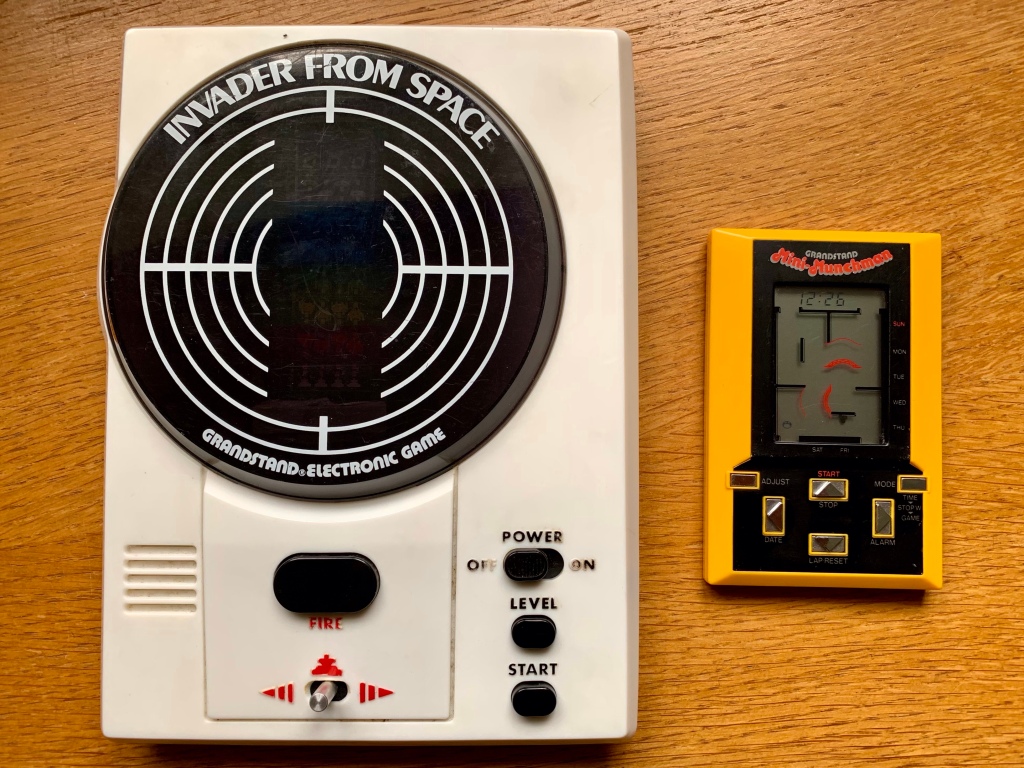
There were certainly many more I’ve missed, but over on the Space Invaders front, as well as Astro Wars and Invader From Space there was Missile Invader, Cosmic Invader (or Galactic Invaders), Galaxy Invaders and its iconic yellow-cased follow-up, Galaxy Invader 1000, and that one’s follow up, the 10000, also called Fire Away; then there was Alien Invaders from Ramtex, who then just gave up on stupid space-themed aliases and went with plain old Space Invaders instead, license be damned! Again, not an exhaustive list but you get the picture – the Wild West being played out in school playgrounds across the land! And a couple of years later, for me at least, that was being played out all over again at home, albeit with a pair of new contenders to the clone throne! For my own experience, I’m talking on the Commodore VIC-20 at the very end of 1983, though I think it was a very similar situation wherever you were lucky enough to be playing. And I’m talking Donkey Kong and Scramble!
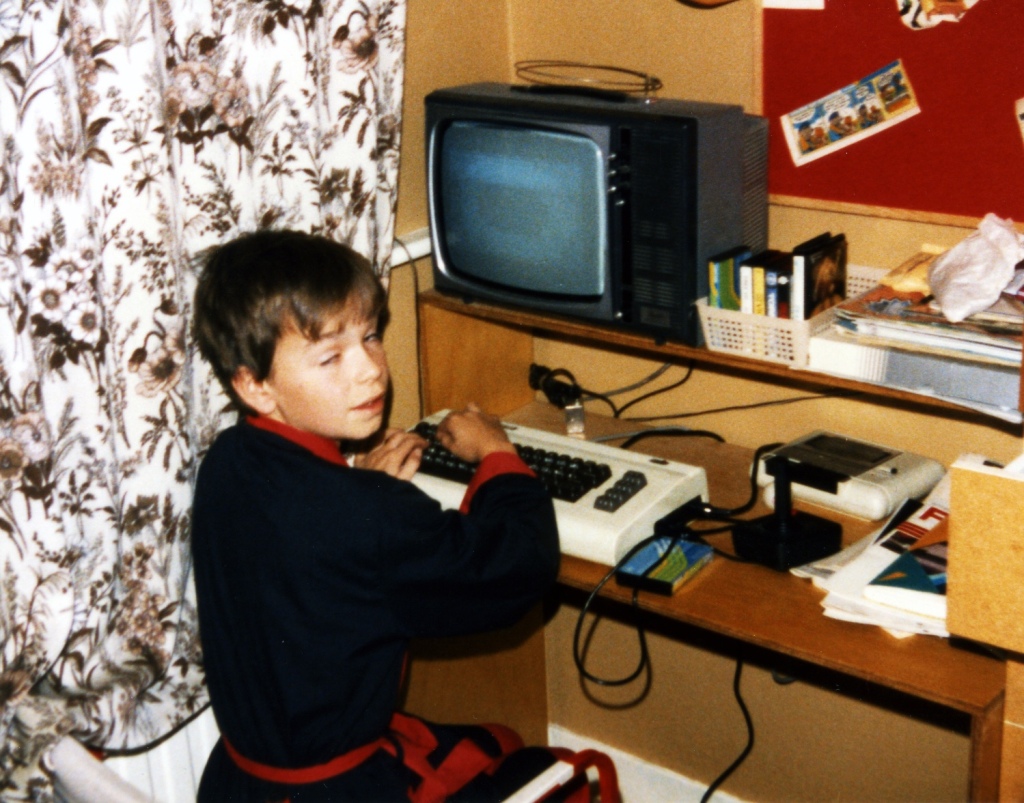
A look at the little plastic cassette basket next to my computer in a photo taken what must have been very shortly after seems to tell us that the very first game I ever bought was either Crazy Kong, possibly more likely, Arcadia – patron saint of what you’re currently reading! Pinball Wizard (the very first game I ever covered here!) also seems to be in there, together with some blank tapes and what I guess is stuff like Blitz that came in the box with the computer, but I remember buying Pinball Wizard in Woolworths in Bedford slightly later, where I think the other two came not long after Christmas 1983 (from an electrical retailer called Carlows). Regardless, while I only have fond memories of Crazy Kong, it’s one of those that’s a bit rough to play today! I really don’t remember the official port by Atarisoft, but that’s still not bad at all, and if you didn’t fancy either of those there was also Krazy Kong, Monkey Kong (genius!), Super Kong, Kongo Kong, Dinky Kong and possibly another Crazy Kong! And remember, that’s only on the VIC-20, so add the Spectrum, Commodore 64, CPC, BBC and anything else and there must have been dozens of Kongs on the loose!
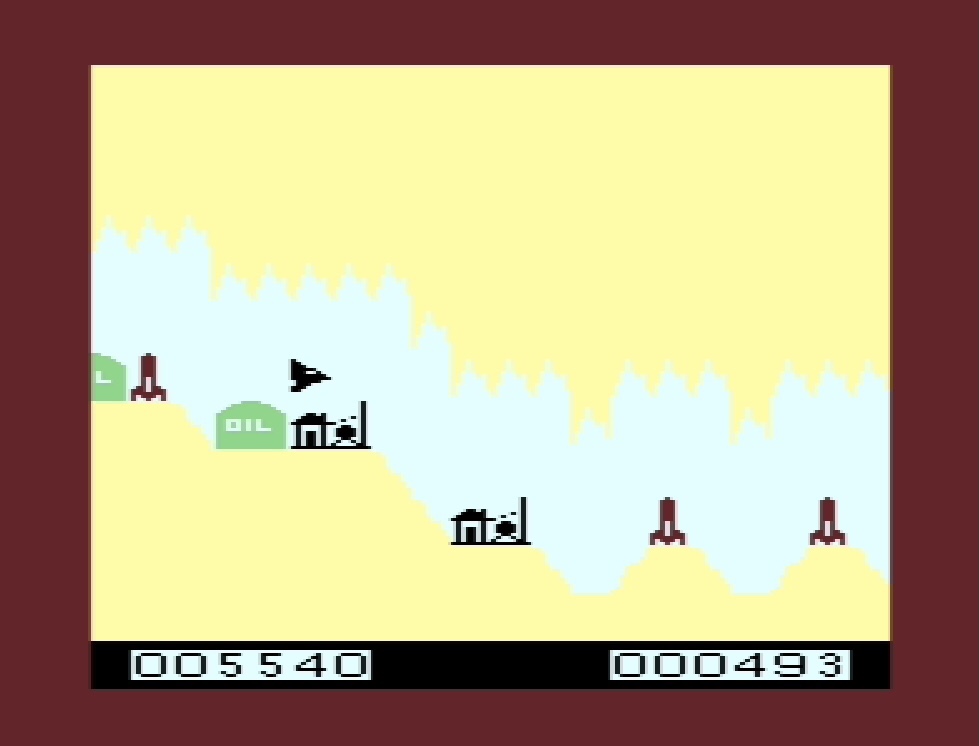
While I don’t really remember seeing the Donkey Kong arcade game anywhere before I bought the game, I knew it from my next-door neighbour’s Game & Watch handheld version, and likewise I think seeing the handheld version in a catalogue was my only experience of Scramble pre-VIC. We’ll come back to that, as well as the arcade original, very shortly, but first I need to try and get my head around Skramble! and Skramble and which is which again! Skramble! (with an exclamation mark) was by Rabbit Software, and it’s the one my best friend owned, and I can’t tell you about much beyond the first couple of stages because I think there’s a game-breaking bug about halfway through, which I did try emulating with save states just to make sure it wasn’t just me being rubbish in the same place over and over! No save states needed with Skramble (without an exclamation mark) though. This is the 16K expanded VIC-20 version by Anirog, it’s the one I owned, and it’s an authentic (kind of) and very impressive take on the original, apart from being pretty easy – in no small part thanks to some very suspect collision detection in that dreaded tunnel section, and a far more forgiving end-game!
Before my brain explodes with all these clones, let’s quickly recap the Scramble arcade game, the groundbreaking horizontally scrolling shoot ‘em up that put Konami on the video gaming map back in 1981. On top of laying many foundations for the genre itself, Scramble was also the first to feature forced scrolling, as well as multiple distinct levels. You’re in what the game calls a “jet” that has its regular missiles on one button and bombs on another, shooting oncoming enemies as well as taking out ground targets, which includes fuel tanks you’ll need to keep bombing to replenish your own supplies throughout the game. You’ve got six stages that merge seamlessly, each presenting a different type of enemy or terrain to negotiate – including that cruel, cruel tunnel section! The hours I spent just trying to perfect that alone, then by time you’ve made it back there the next time you realise you have to learn its insane timing all over again! It’s a brilliant game though, with a very reachable end-point (before it loops!) and some real variety on the way there. Massive success for Konami too, and spawned a bigger and harder sequel, Super Cobra, not long after, although that’s probably better known now for spawning the legendary Gradius in 1985, whether you regard it to be the game that launched that series or simply spiritual predecessor!
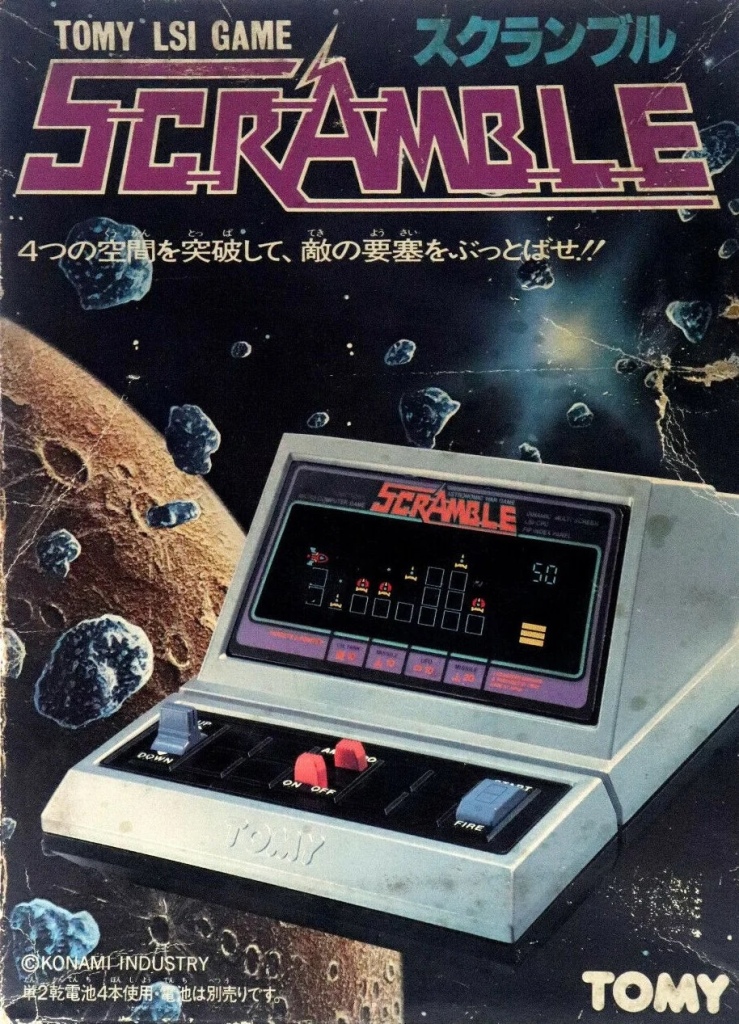
Apart from the Vectrex, I’m not sure there was ever an official home version of Scramble until the Konami Collector Series Arcade Advanced compilation on Game Boy Advance, which is a really decent way to play, although that didn’t stop there also being a “Scramble” on the VIC-20 as well as the C64 and, no doubt, elsewhere. There were several licensed electronic versions though. First came the TomyTronic version, which was a big tabletop thing that looks like one of those green-screen computers from the future in the seventies, like you’d see on the Nostromo in the original Alien movie! It’s visibly Scramble, but way simplified, with limited movement and very basic scrolling scenery, just as you’d expect. Looks like it plays great though, with some lovely VFD ships, and you’ve got the fuel gauge to keep topped up and different stages too, including the stinky tunnel maze which you have to fly through without touching the walls, and there’s a cool boss fight with a nice little tune at the end. I’d never seen it in action until a couple of minutes ago as I write though, and don’t ever remember seeing it anywhere at the time – and given the time I spent wistfully flicking through this stuff in catalogues, if it was there I’d have known about it!
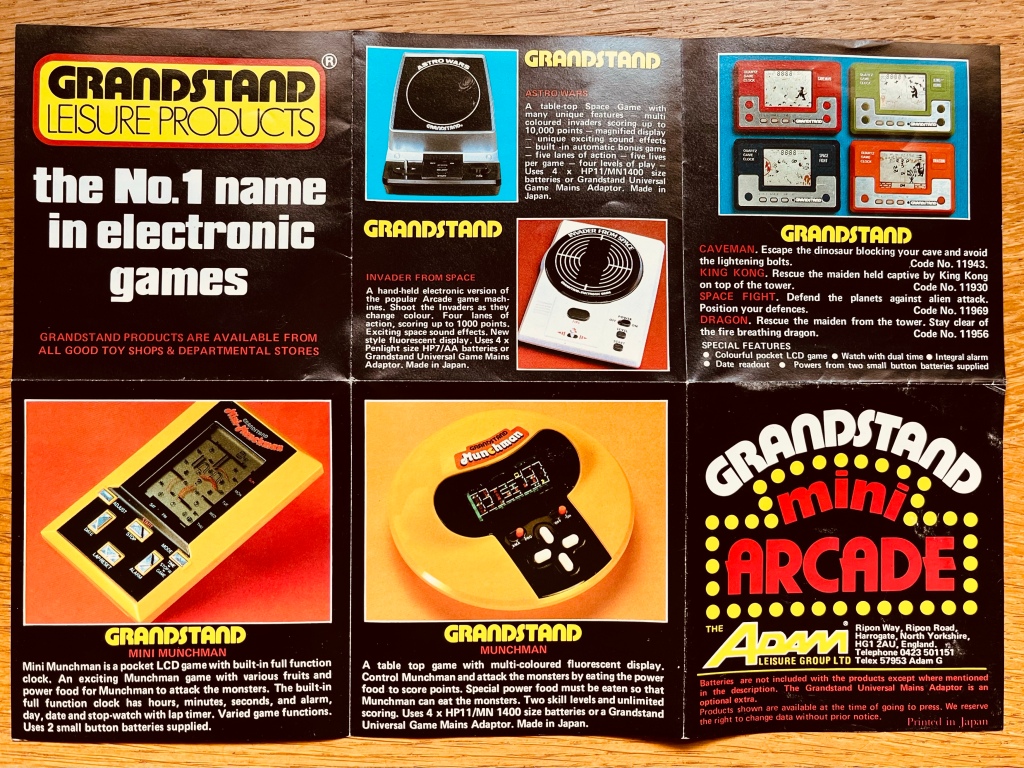
What I did know about was the second tabletop version, which followed shortly after in 1982, and was licensed to Grandstand by Epoch, who were already selling it in Japan as Astro Command. Which might explain why it’s not quite as close to the original arcade game as the Scramble-and-Scramble-alone TomyTronic version! I do recall the smaller version of this one that followed in 1983 too, Pocket Scramble, in the same handheld format as Mini Munchman, but that’s a story for another day because we’re going to focus on full-fat, big-boy Grandstand Scramble now! At a suggested retail price of £32.95 (or Argos price of £22.95) this thing was at the luxury end of the electronic game market which, combined with the fact it wasn’t Space Invaders or Pac-Man, might explain why it took me forty-one years to get hold of it! And while I’ve talked a few times elsewhere before about eBay holy grails, this wasn’t one of them – just a nice-to-have I remembered existing a year or so earlier and saved a search for, meaning I’d get an email when one occasionally came up, and if the condition was right, I’d have a bid. I did go just over my self-imposed limit of £50, which is a good price for a used working unit but I managed to grab this one with a box in decent condition too. And if you allow for inflation it’s still about half that Argos price in 2023 money!
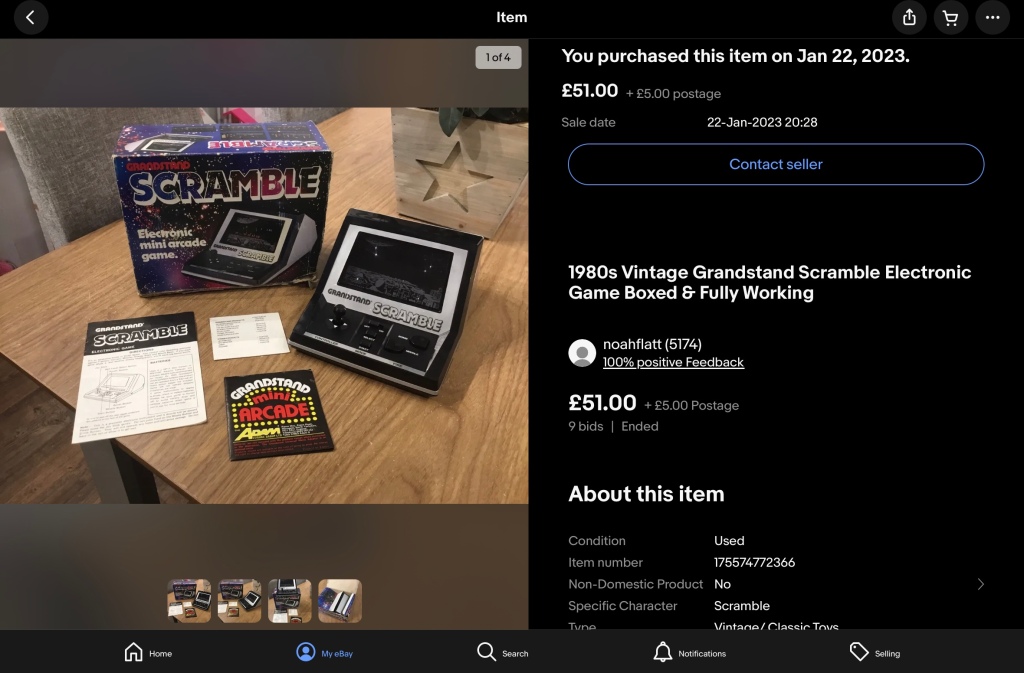
Right, time we finally talked about what I got for my money! “It’s an escalating battle in Outer Space. You control your Spaceship and battle against Fighters, Carriers, Missiles, Energy Bases and Missile Bases. If you reach game phase 5 and destroy enemy headquarters, you’ll score big bonus points.” And what more do you need to know? Well, quite a lot given the size of the instruction manual, but we’ll get there. First, though, the unit itself is about 17cm wide, 12cm high and a whopping 23cm deep, allowing for an arcade-style control area in front of the screen. The screen is a multicoloured vacuum fluorescent display, only really missing the wild scenery of the original, which is instead achieved by an overlay on the screen but well below the “glass” (clear plastic) you’re looking through, showing a cratered lunar surface top left, a starfield down either side and what looks the surface of the Death Star from Star Wars across the bottom, which is full of cool monochrome detail. I guess overall it’s taking up a good half of the total display area, but once everything is in action it all just merges into one to great effect.
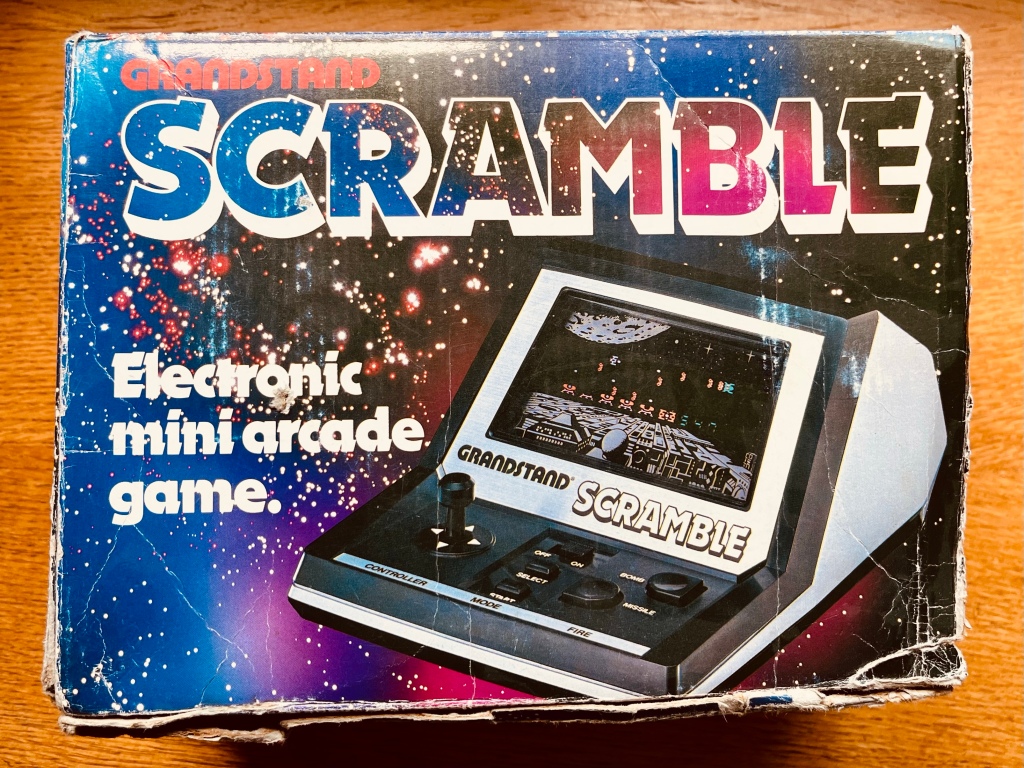
On the control side there’s a four-way joystick on the left and chunky separate buttons for missile and bomb on the right, with the power, start and skill select switches in the middle, and in case you forget, they’re all conveniently labelled down the front, like something out of the BatCave! They all feel solid, and the joystick way more so than the one that came with their Invader From Space, but all the same, you need to heed this warning: “This is a precision electronic instrument and it should not be abused. Please move the Joy Stick gently. Do not press hard on the Missile Button and Bomb Button. They will not operate any faster and will avoid damage. Do not leave in the sun or allow it to get wet.” And don’t say I didn’t warn you! I do love their concern for you but I’d love to talk to whoever wrote this stuff and understand their rationale for the bizarre use of upper case letters throughout this instruction manual I’m quoting from!
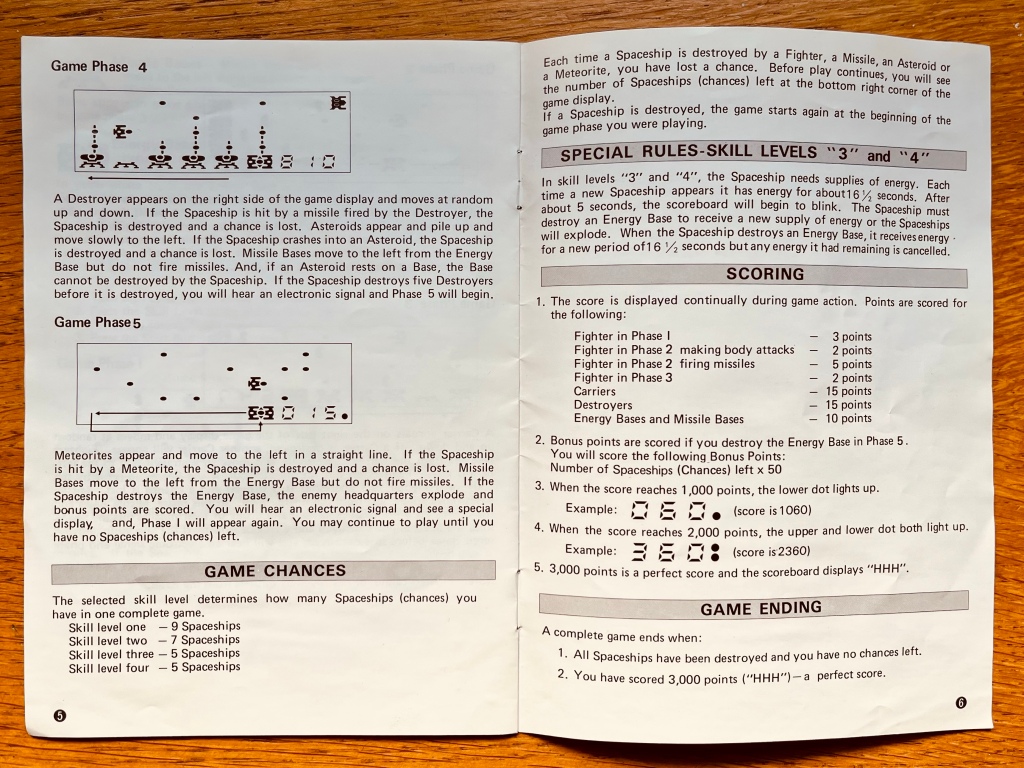
Once the game is powered up, from either 4 x HP11 zinc carbon or MN1400 alkaline batteries (or a Grandstand mains adaptor), you can choose your skill level from a choice of four – the first plays at normal speed and the second at faster speed, then things get interesting with the next two because the third plays at a moderate pace but you’ll need to restock your energy every sixteen seconds maximum by destroying an Energy Base, and the fourth is the same again but faster. I thought that was a really thoughtful way of emulating the original game while keeping things as accessible by default as you’d expect from a handheld / tabletop. These skill levels also dictate the number of lives you’ve got, with nine on the first, seven on the second and five on the other two. Until I was reading these instructions, I didn’t realise there’s also a “Phase Continuity Function” on the start button too – it’s a continue, so press Start within five seconds of game over and you’ll carry on from where you left off but with zero points.
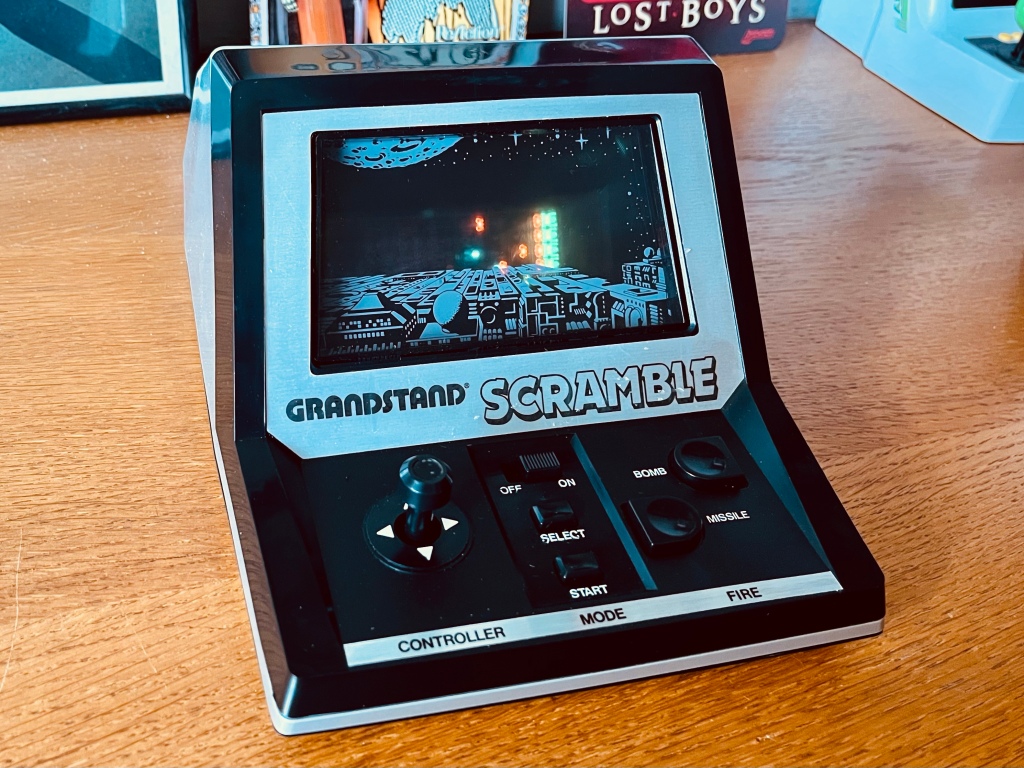
This thing really is the love letter to the arcade machine that the packaging promises, going to great lengths to be as authentic as possible within its crazy miniaturised limitations, and none more so than with its five separate stages. In the first one, enemy fighters appear in formations of four, moving from right to left in an up and down pattern shooting missiles at you. Along the bottom you’ll see Missile Bases but they’re not firing at you yet so you just need to worry about taking down sixteen fighters to progress to the next stage. That’s by no means easy, especially when you have to start the count again in you lose a life, but there is a rhythm to the fighters, and while there’s always a chance you’ll get hit by a stray missile, you do eventually work out how to take them down before too many are being shot at you. Can still take a while to get through this one though!
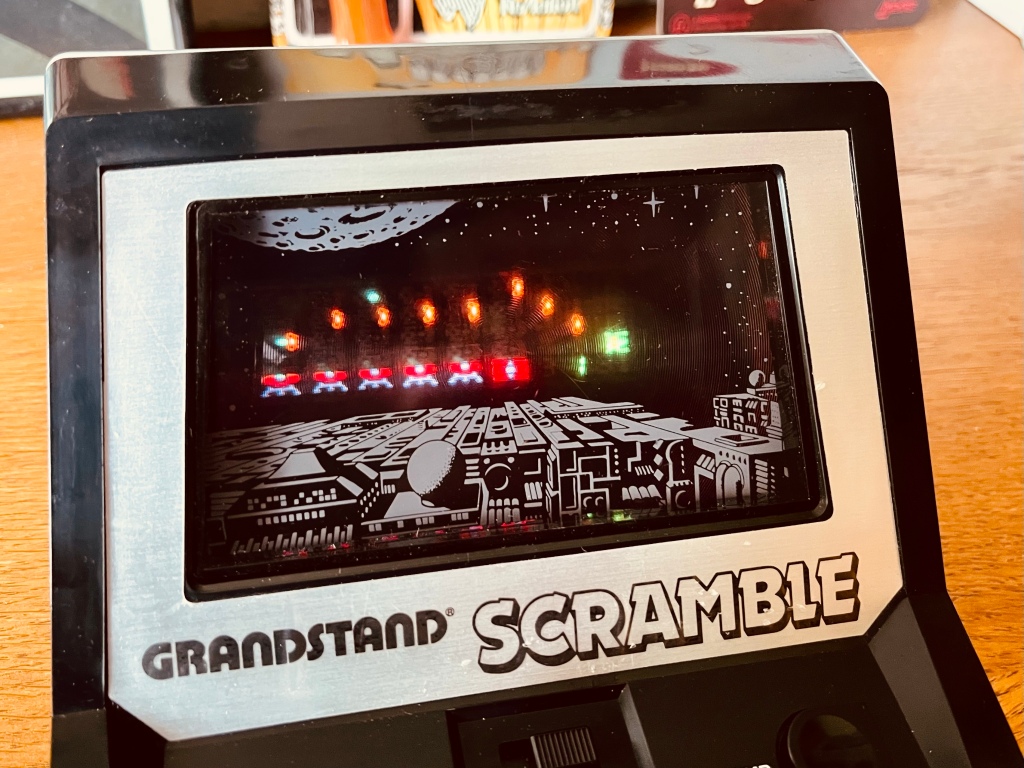
Stage two is generally much quicker, with four carrier ships appearing on the right side of the screen which launch more fighters, and this time they’re zig-zagging towards you, and you need to take those down so you can get at the four carriers and destroy them all to move on to stage three. This one is about managing space and making sure you don’t get penned in, especially when you’ve got one carrier left and it’s at the top of the screen, while you’re at the bottom with waves of fighters and missiles preventing you from going up. Not too bad though. On stage three, a single carrier appears on the right of the screen and moves up and down at random, launching fighters in a straight line towards you on the left; by the way, I should say that while you can move your ship in any direction, you can only go five “spaces” to the right, at which point you’ll automatically be moved back. Missile Bases are now active and shooting missiles at you, meaning the regular threat from the right is now multiplied by one from below, making this level really tough; shoot seven carriers though and you’ll move to stage four.
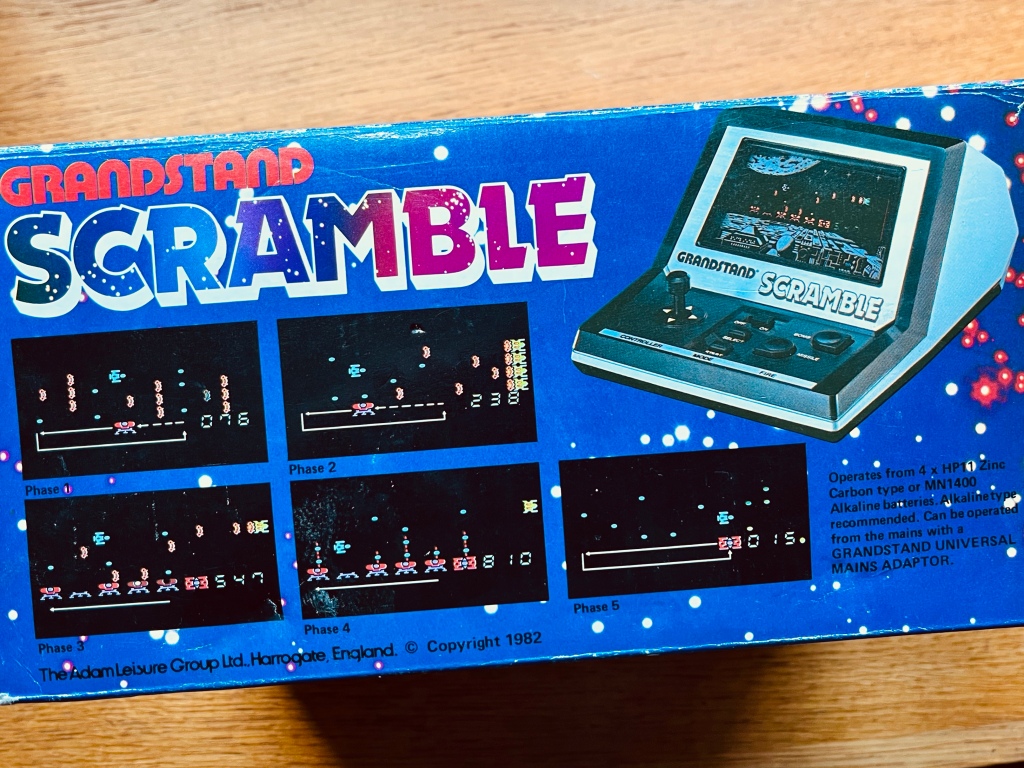
New enemy type here, a destroyer, which also moves up and down at random on the right of the screen and fires a succession of missiles at you. You’ve also got asteroids to contend with, dropping from the sky and piling up on the surface then slowly scrolling to the left; if they happen to pile up on an enemy base you can’t shoot it, but they’re not shooting at you in this stage either. The objective here is to destroy five destroyers, and as long as you keep an eye on the piles of asteroids below you it’s just a case of being patient and picking your shots to move on to the final stage where you’re greeted by a load of meteorites, moving to the left in a straight line, and there’s missile bases too but once again, they’re out of missiles, so all you have to do is avoid the meteorites and take out the enemy headquarters, which is pretty straightforward if you keep your eyes open, and this will reward you with starting a new loop. There is actually an ending though – get to 3,000 points (or “HHH”) and you’ll have achieved the perfect score. Job done! Easier said than done though, with fighters in stage one, for example, only worth a measly three points, up to a maximum of fifteen points for a carrier or destroyer.
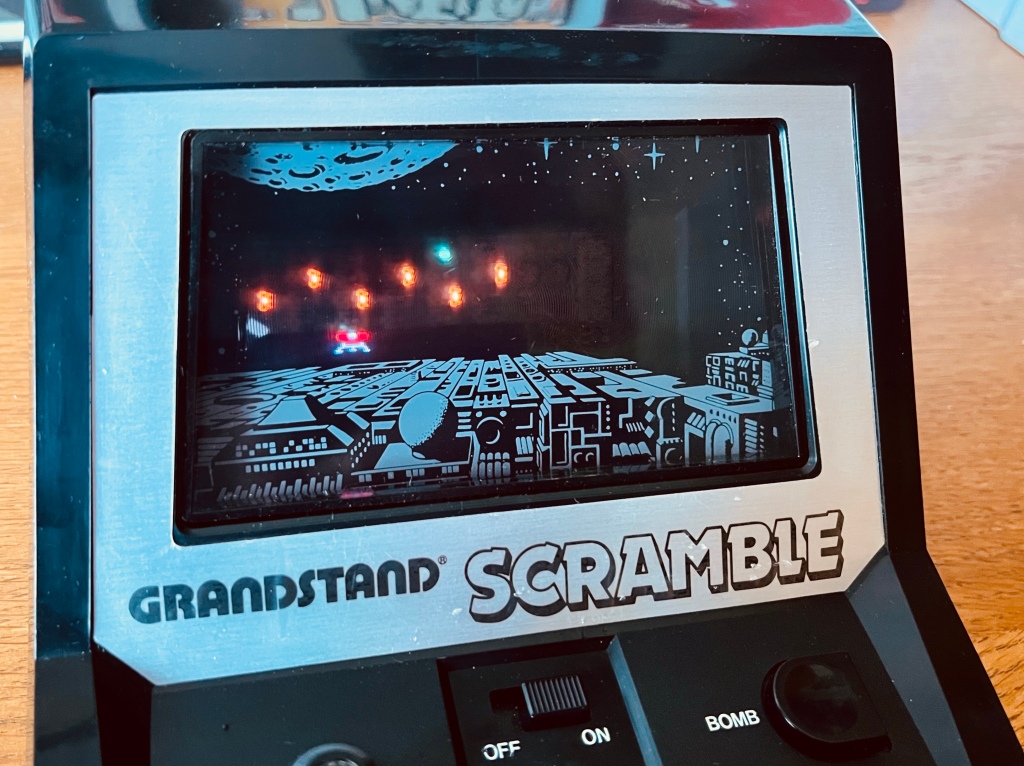
Controlling your ship is a very binary thing, and you are very much at the mercy of the lag between what you’re trying to do or where you’re trying to go and actually doing it or getting there, so you need to anticipate what else is going to occupy that space you’re trying to get to in a very binary way too. But that was always the nature of these games because of the nature of how the display is refreshing what’s where. As alluded to before, you soon get used to it, and you soon become at one with it, and I think in some ways it even helps you get into the zone as much as you find yourself doing with this game – like some kind of hypnotic strobe effect, I guess! You wouldn’t want to change the display though – all that colour was impossible on anything else at the time, and like with the similarly displayed and overlaid BMX Flyer – also from Grandstand – it’s used to fantastic effect. We’re not talking about stuff like pixels and resolution here – your ship and the enemy ships and their missiles are just single shapes, way beyond anything you’d see in something like Space Invaders that you could replicate on a bit of graph paper. It’s all curves and solidity, but you’ve also got different colours on the go in each too.
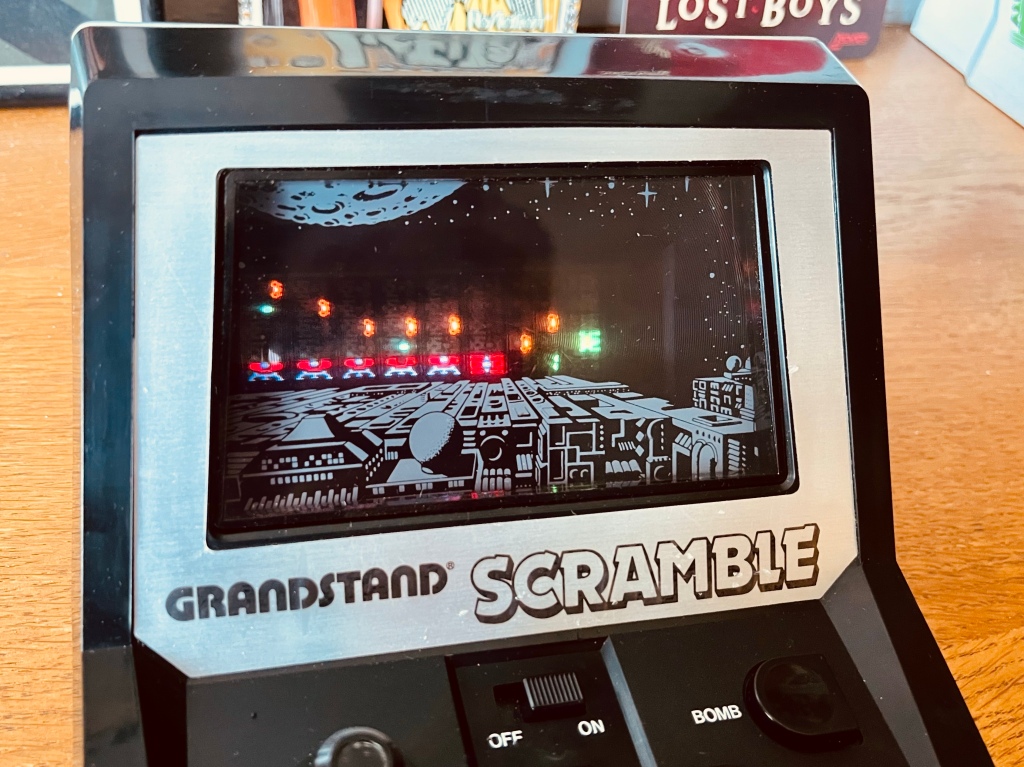
The Missile Bases are my favourites, bold red on a blue frame, but you’ve got similar effects on the fighters and destroyers and other objects that gives everything its own unique personality, which is impressive considering they are mostly just generic sci-fi shapes! There’s some primitive but effective animation too, often just a brief and subtle flicker before a destroyed ship disappears, for example, but if we go back to those Missile Bases, if you successfully bomb them that red part of the structure will disappear, leaving only the legs behind. Really above and beyond stuff here. To the developers’ credit they did their best to do the same with the sound too, with a different cheerful but unfortunately grating and very loud ditty playing for almost everything, from switching it on to starting a game to losing a life to game over – as anyone who’s ever played anything like this will know though, that’s also par for the course, and at the time was really cool! Sound effects are more effective and marginally less grating though, and again, everything has its own little beep for guns and a different one for bombs, or a white-noisy grindy sound, for movement. Couldn’t ask for more, even if you could maybe wish for a bit less!
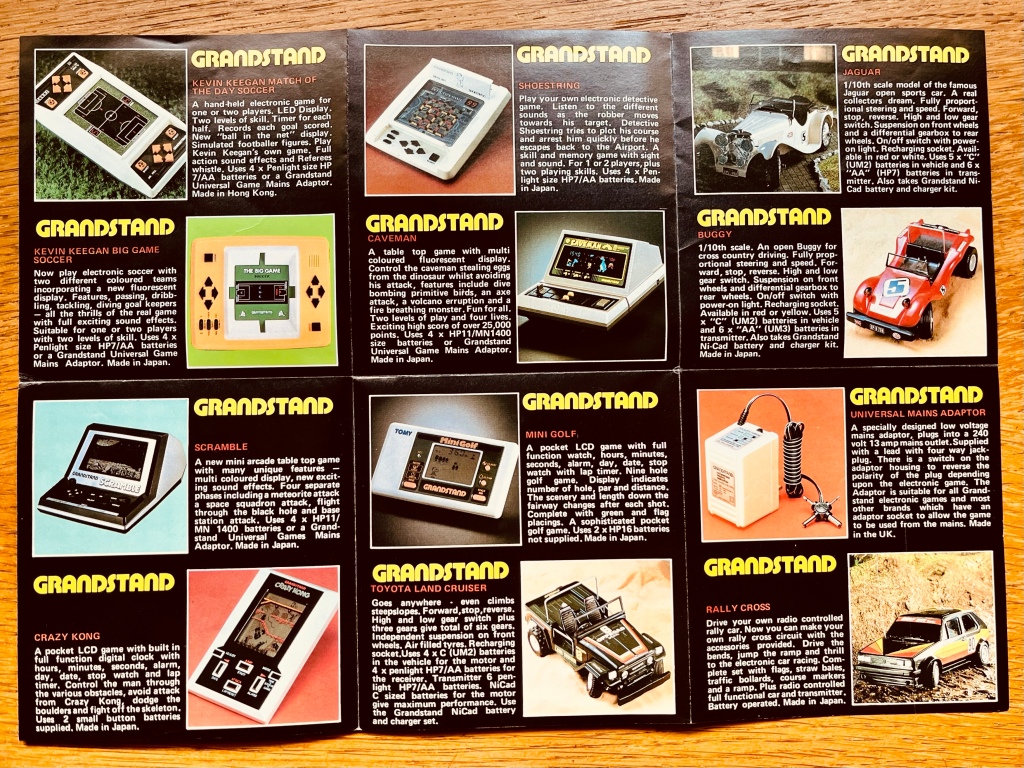
I was thinking to myself, if you took the word “Scramble” off the front of this would you know it was Scramble? The honest answer is you’d know it was inspired by Scramble, and given its ground-breaking nature at the time – and that we’re talking about thirty quid’s worth of tabletop electronic game from 1982 – I’m not sure you could ask for more than that either! Grandstand’s (or Epoch’s, I guess) take is groundbreaking in its own right too, with its arcade-machine ambitions and multiple distinct stages, neither of which I can remember seeing on contemporary games previously. And if I think back to the hours and hours and hours I spent playing Invader From Space around then, I can only imagine how long that would have been if I’d been given this for Christmas that year instead! The box says “exciting mini arcade space action game” on the side, and while that’s certainly true, it’s not even half the story. So much variety, so much to look at (as well as hear, as long as you’re listening through early eighties ears!) and forty years on it’s still so much fun, and so easy to slip into a groove of then just keep starting over and over again as a result. Being ten years old will never get any better than this!


I’ve never heard of Ogre Eater, but hats off to whoever came up with that name presumably after seeing an Odor-Eaters advert (which were everywhere in the 70’s).
LikeLike